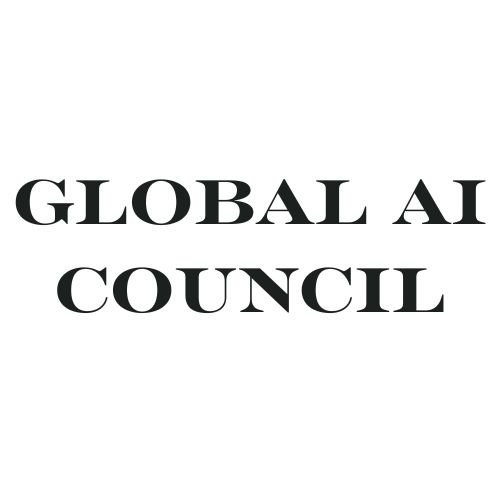Insight for the Global AI Council Community
What’s Behind Amazon’s 14,000-Job Cut — And Why It Matters for AI & Skills Strategy
In late October 2025, Amazon announced it will reduce approximately 14,000 corporate roles, affecting around 4% of its white-collar workforce. Pragmatic Engineer+3The Economic Times+3About Amazon+3
This move is taking place against the backdrop of massive technological change, particularly the rise of artificial intelligence (AI), as well as broader economic headwinds.
Here’s a breakdown of what this means — especially from the lens of a global AI-focused organisation like the Global AI Council — and what we should think about going forward.
1. What Amazon is saying
According to the company memo, the cuts are part of an effort “to be organised more leanly, with fewer layers and more ownership” so that Amazon can “move as quickly as possible for our customers and business.” Pragmatic Engineer+2Fast Company+2
The official communication from Amazon emphasised that the reduction will include both role eliminations and hiring in strategic growth areas. About Amazon
However, in an earnings call, CEO Andy Jassy suggested the reasoning is more cultural and organisational than purely financial or AI-driven. He said: “It’s not really financially driven, and it’s not even really AI-driven … It’s culture.” Fast Company+1
2. What’s likely driving this
From our analysis, for the Global AI Council community, key drivers include:
a. Over-hiring / organisational bloat
Amazon, like many tech firms, grew rapidly during the pandemic years. Some of the cuts likely reflect a reversal of that. Pragmatic Engineer+1
The notion of reducing “layers” and bureaucracy suggests a push to streamline decision-making and possibly reduce middle-management overhead. Pragmatic Engineer
b. Strategic pivot toward AI & future-growth areas
While Amazon says this isn’t currently AI-driven, many observers believe the company is preparing for a future where AI and automation will play larger roles — and thus preparing its workforce accordingly. Pragmatic Engineer+1
For example, the company is investing heavily in data centres, next-gen computing, and robotics. Fast Company
c. Macroeconomic/consumer behaviour shifts
As a major e-commerce and cloud firm, Amazon is sensitive to shifts in consumer demand, inflation, and global supply-chain costs. Some of the reduction may be anticipatory given the environment. Pragmatic Engineer+1
3. Why it matters for the AI & workforce ecosystem
For our global AI community, there are several implications:
Skills and employability
If companies like Amazon are reducing roles in certain corporate/technical areas, individuals need to anticipate which roles are growing (e.g., AI engineering, cloud infrastructure, data science) rather than those being phased out.
Upskilling and reskilling become even more critical: AI literacy, human-machine collaboration, and adaptability will be premium capabilities.
Economic and societal ripple-effects
Large layoffs in tech can signal broader workforce shifts — especially in countries/regions where tech employment is a major growth area. This has implications for local talent ecosystems, education providers, and digital inclusion efforts.
For governments and policy makers: how do we support workers transitioning, ensuring they aren’t left behind in the AI transition?
Organisational strategy & governance
From a governance perspective, the move underscores the importance of aligning workforce strategy with business strategy in the AI era. Organisations will need to reconsider how they structure teams, how they invest in people vs automation, and how they maintain ethical, inclusive practices during change.
For AI tool builders: human impact matters. If AI deployment coincides with large layoffs, it will raise questions about trust, ethics, and the future of work.
4. What to watch for
As part of our Global AI Council monitoring, consider the following indicators:
Which business units at Amazon (and other firms) are hiring vs cutting — e.g., cloud/AI vs traditional corporate roles.
Geographic distribution of cuts and hires — this matters for global talent flows, emerging markets, and remote-work implications.
Support & transition programmes for affected staff — are companies offering reskilling, redeployment, severance, etc. Amazon noted 90 days of internal job search for impacted staff. About Amazon+1
AI productivity claims vs human cost — as AI becomes more embedded, we must watch for narratives of automation replacing human roles and evaluate fairness, transparency, and ethics.
5. What our Global AI Council should do
Here are actionable considerations for our community:
Offer guidance and frameworks: Develop best-practice guidelines for organisations undergoing AI transformation — covering workforce transition, ethics, retraining.
Promote lifelong learning: Emphasise the need for continuous learning, especially in fields intersecting AI, human skills, ethics, and digital fluency.
Bridge policy and practice: Engage with governments and corporations in our network to shape policies that support equitable AI adoption and workforce transition.
Foster collaboration: Encourage partnerships between corporates, educational institutions, and nonprofits to create pathways for reskilling affected workers.
Track and share case-studies: Use this Amazon example — and future cases — to build a repository of lessons learned about workforce shifts in the AI era.
6. Final thought
Amazon’s reduction of 14,000 roles is a reminder that the AI era is not just about building new tools — it’s about reshaping how organisations operate, how people work, and how societies adapt. For the Global AI Council, this is more than a headline: it’s a clarion call for proactive, human-centred leadership in the age of AI.
Let’s use this as an opportunity to design systems where technology amplifies human potential, supports lifelong growth, and ensures that change is inclusive — not just efficient.

